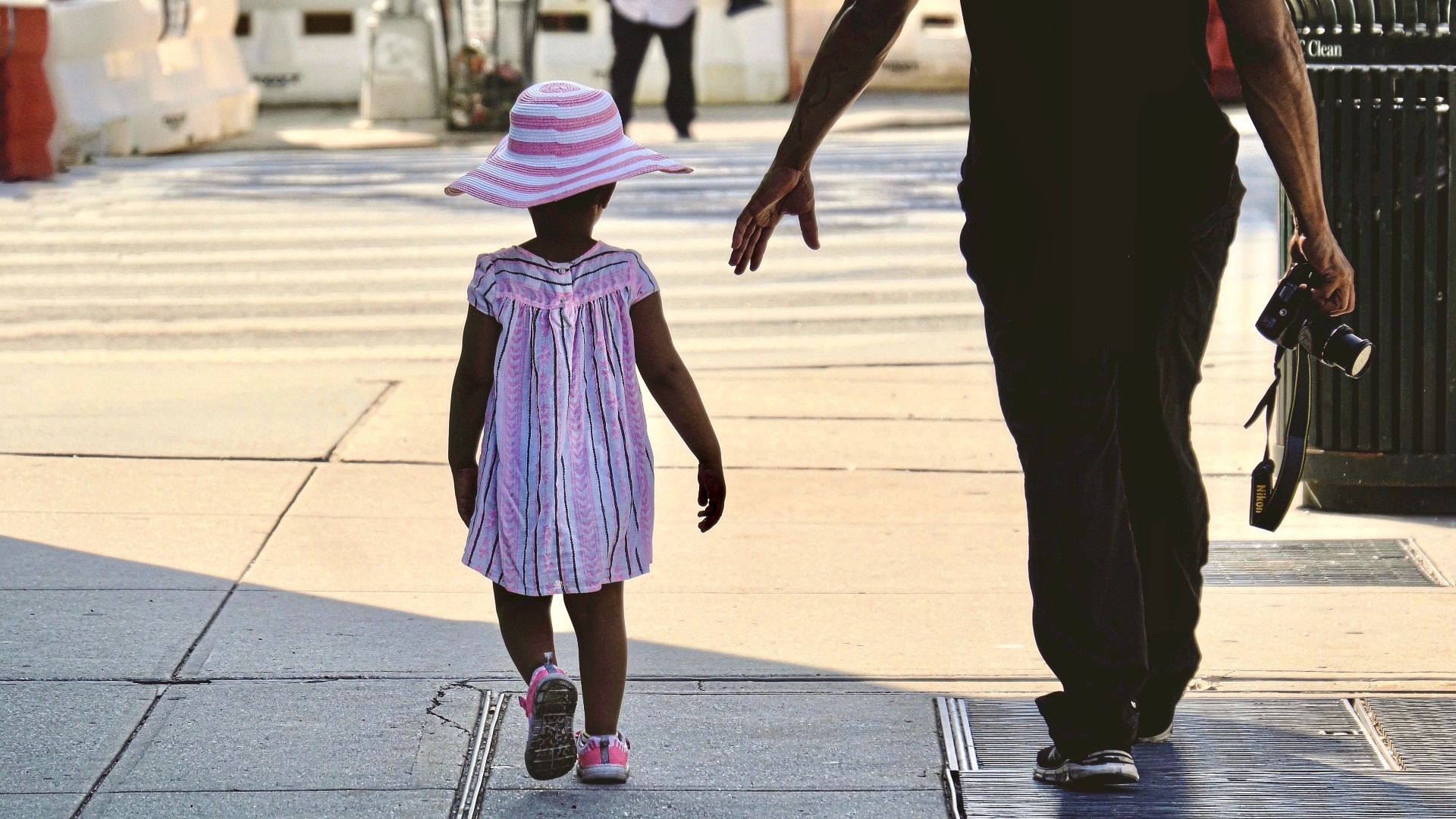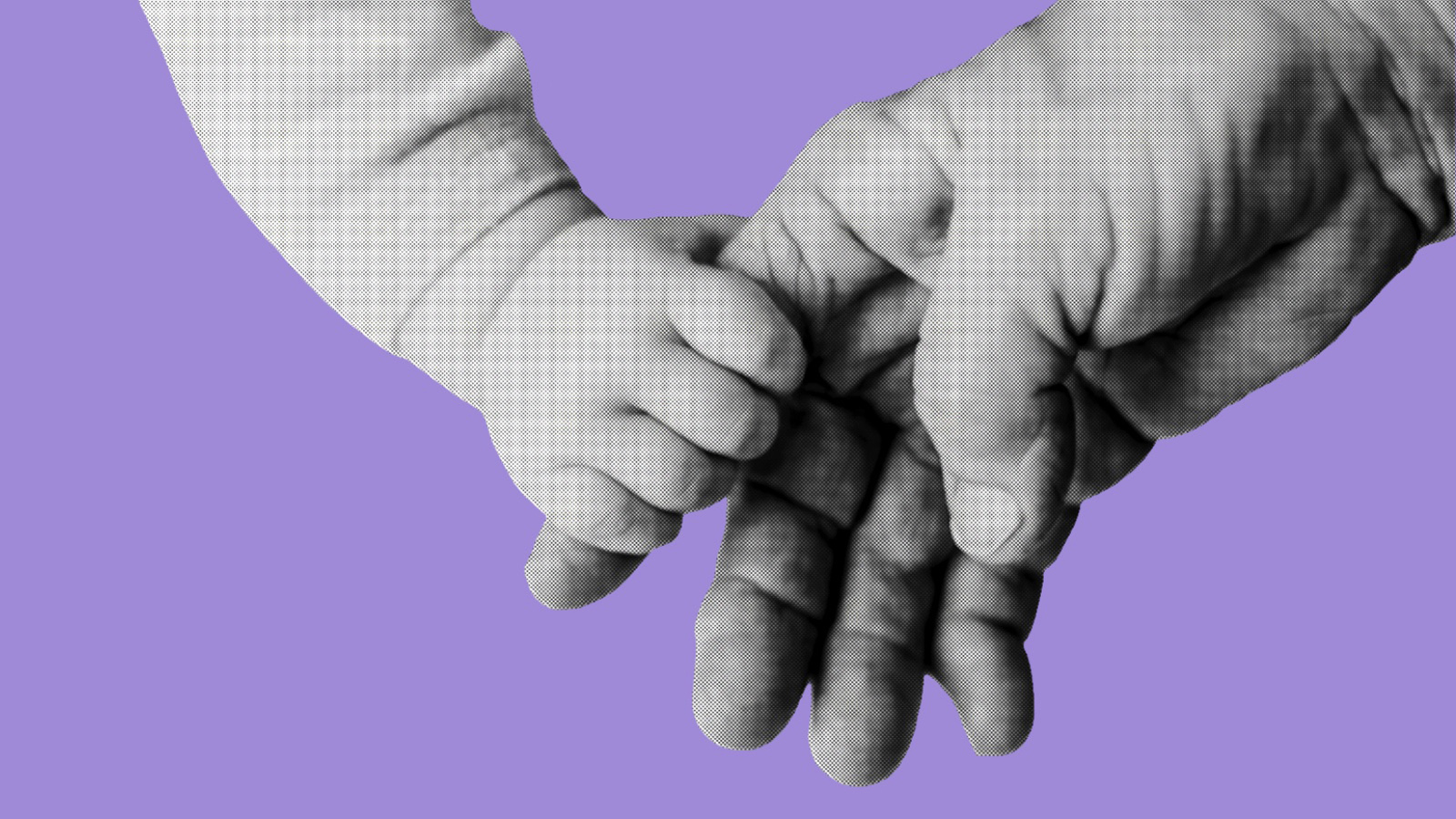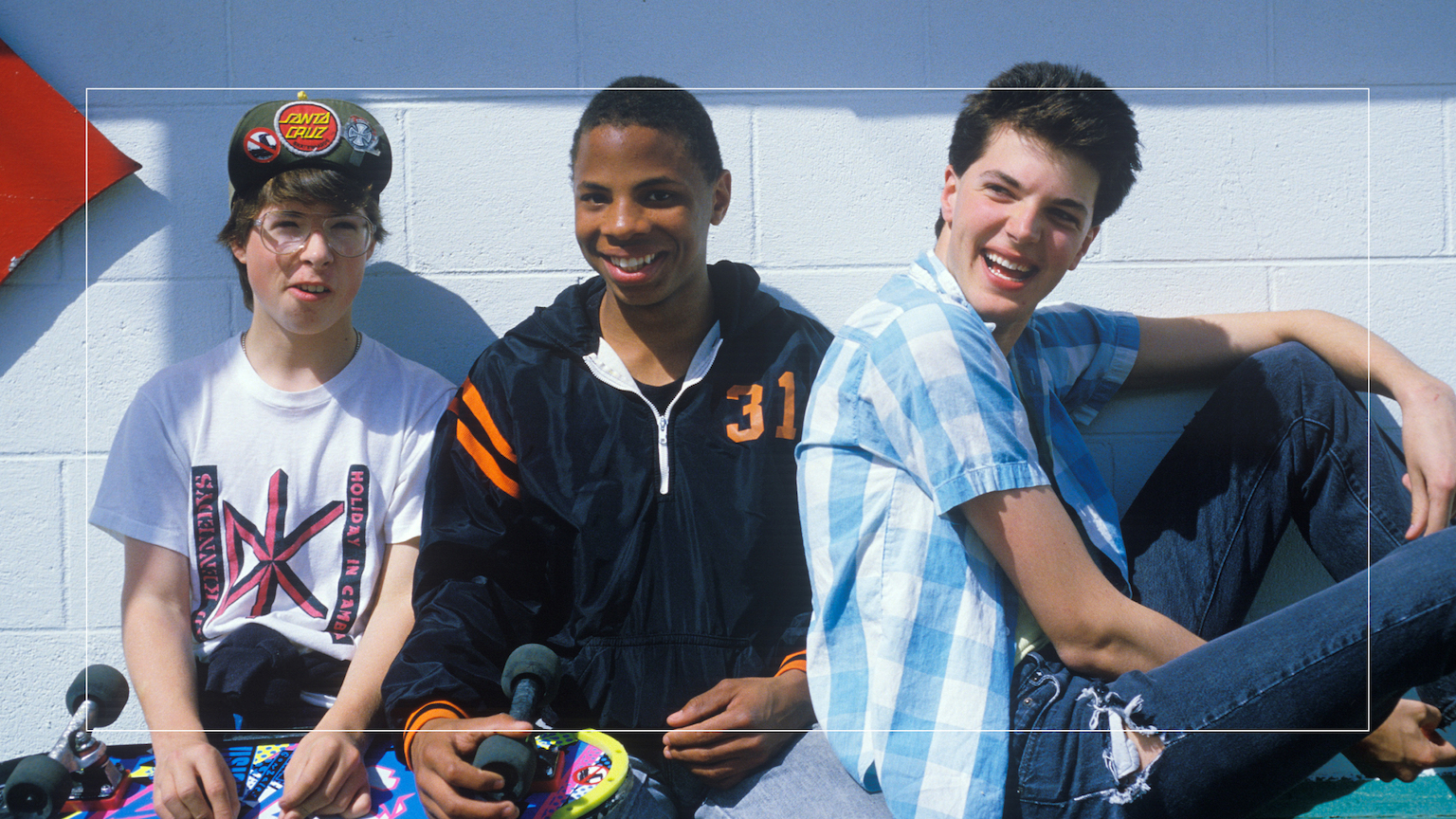Parents: Don’t make your child the enemy. Build your relationship instead

- Fear and uncertainty can lead parents to self-blame and beliefs that are ultimately counterproductive.
- Dr. Becky Kennedy advocates that parents focus on their relationships with their children and build “connection capital.”
- To build that capital, parents should bridge understandings, set safe boundaries, and repair relationships with compassion and honesty.
Whether we’d like to admit it or not, so much of parenting can come from a place of uncertainty. Uncertainty over whether that bad behavior arises from a deep-seated character flaw. Uncertainty over whether our mistakes will forever tarnish their chances at happiness and wholeness. Uncertainty over whether we have the ability to give our children what they need to grow into the person they want to be.
In her book, Good Inside: A Guide to Becoming the Parent You Want to Be, Dr. Becky Kennedy contends these uncertainties, while understandable, have the unfortunate tendency to evolve into unhelpful fear and self-blame. Parents needn’t approach parenting like a middle manager trying to train children for a specific life role. Instead, the heart of parenting should be the relationship they build with their children, both now and throughout their lives.
In an email interview with Dr. Becky, we discussed how parents can build connection capital with their children, the value it brings to parenting, and how we can set parental perfection aside for a healthier approach.*
KEVIN: There’s a lot of advice out there on parenting styles, parenting tools, and, of course, three-day methods to quickly get the results you want from your child.
But you open your book by considering behavior as an expression of emotional needs, not as something to mold a child’s identity. Why is that such a foundational distinction for parents to understand?
DR. BECKY: It’s such a foundational distinction because when we look at a child only as their latest behavior, we ask questions that end up seeing them as the enemy. Why is my kid acting this way? What’s wrong with them?
We see bad behavior, and unconsciously, we make that an identity. Then we’re working against our kids, and we’re reflecting an image of them as bad kids, which is then how they form their identity, right? Nobody wants that.
When we instead look at behavior as an expression of emotional needs, we now see a kid who’s struggling. We see a kid who’s on our team, and we want to be on their team. We want to help them instead of punishing them. We want to move toward them instead of pushing them away. And that makes all the difference.
KEVIN: You describe a parent’s role as someone who teaches their children to better manage their feelings, perceptions, and thoughts. Their primary tool shouldn’t be lectures, time-outs, or rewards but building their relationships with their children.
Why should parents prioritize relationships over those more traditional techniques, and do those more traditional techniques still have a place?
DR. BECKY: First, I’m a pragmatist at heart. I love when relationships feel good and when we act in line with our values. I also believe that we don’t have to choose one thing or the other. The best thing about the Good Inside approach is you can say, “I’m acting in line with my values. This feels better to me; this feels better to my kid. I’m developing a relationship with them and setting them up to be a resilient adult by helping them build the skills they need for their life.”
So, prioritizing relationships isn’t a way of building a relationship with your kid at the expense of changing and improving their regulation and behavior. No! You’re building a relationship with your children, and that relationship is the primary vehicle through which your children learn regulation skills. Regulation skills are what allow kids to change their behavior, so we win all over the place.
Do these behavioral control methods still have a place? I would say that we all parent the way we were parented until we have more awareness, knowledge, support, and resources. And I would never want to have parents spiral into shame — “Oh, I gave my kid a time-out. Oh no, I gave my kid a lecture.”
Look, we’re all imperfect. I have a place where I’m like, “Wow, I just lectured my kid. I know that wasn’t useful, but that just happened,” or “Wow, I just offered my kid a reward for something that I probably could have handled differently.” I do these things, too.
I would say it’s a good time just to rethink human relationships, rethink what kids need, and rethink what adults and parents need in this really important and difficult job we have. Then realize that, yes, some of these things are probably going to be triggered, and the beauty is we can always repair when we have the resources and support to move forward.

The value of connection capital
KEVIN: In the second half of your book, you offer strategies for common parent-child challenges such as not listening, eating habits, and sleep schedules.
Can you provide an example of a common challenge and how the focus on “connection capital” can help parents navigate it?
DR. BECKY: I think listening is a great example. We often say that kids don’t listen. But any parent who says, “Ice cream sundae on the table” or “Sit on the couch, and you can use the iPad for five hours” knows kids listen. What we really mean is I want my kids to do something that they don’t want to do, or my kid isn’t doing the thing I asked them to do. We’re talking about cooperation or even compliance, a situation where we and our kids are in a different world.
In such a situation, it’s helpful to put your hands out, separate them, and say, “Here’s my kid in their world. They want to use their iPad. Here’s my parent world, and I want them to stop.” How do we bridge that gap? We bridge it by being more connected. If you think about those two different worlds, if you think about a bridge that’s between them now, there’s a way for you to walk to your kid’s world and then walk them to yours.
Connection capital is all the different things we can do to build that bridge. It’s the way we see our kids and understand them, even when we don’t agree with them.
And understanding does not mean we have to give in. Understanding why my kids want to keep using their iPads goes hand in hand with setting a boundary that iPad time is over. But over time, when kids feel more understood, when they build connections with us, when they feel like we see them as respectable real human beings, they’re more likely to cooperate.
The same applies when adults feel more connected to a partner or a boss. When we feel more respected, we always become more flexible as well.
KEVIN: As with any example, there will be parents who feel that particular script or approach won’t work for their child’s individual needs. What advice can you give parents looking to develop their own approach to a specific challenge their family is facing?
DR. BECKY: First of all, I would say amazing if you’re a parent who says, “This script and approach doesn’t exactly work for my child with their individual needs.”
Parents know what they want to do with a kid, but many have told me it’s not until they have a script that they actually can open the door. Then once they’ve opened the door, they can proceed a little more creatively and rely on themselves.
So, I see scripts not as the truth but as a door opener to a new pathway. And I love providing these new frameworks and ideas and having parents combine that with their knowledge of their family, their kids, and their values.
Good Inside isn’t a “here’s what to do” approach. It offers new ways to think about what might be going on. Here’s a new set of glasses to see a problem in a new way.
Connection capital is all the different things we can do to build that bridge. It’s the way we see our kids and understand them, even when we don’t agree with them.
– Dr. Becky Kennedy
Building bridges and boundaries
KEVIN: What are your thoughts on what I’ll call — for lack of better terms — the helicopter vs. free-range parenting debate? Is there anything missing in these types of conversations, and if so, why is it important?
DR. BECKY: I struggle with these kinds of reductionistic labels that play out in the media. I spend a lot more time trying to think about ideas and specific examples because, to me, that gets a lot closer to reality.
What I would say in general is that I think kids need boundaries and they need to know that their parent is a sturdy pilot during turbulent times — which is a lot of childhood. They also need to feel seen and validated.
I think kids are always asking two questions of parents: Am I safe? and Am I real?
How parents answer that first one is, in part, through boundaries. As in, “I will keep you safe when you can’t keep yourself safe. I will make decisions for you that I know are good for you. When you’re not able to make those decisions for yourself, that falls into the category of boundaries. That’s how I keep you safe.”
The second question is also asking, “Do the feelings that I feel inside exist?” Because there are no markers for those emotions in the external world. So, seeing our kids’ feelings, naming them, labeling them, and empathizing with them helps answer that question.
And I think both components — maintaining sturdy boundaries and validating and empathizing with feelings — are part of effective parenting. One without the other in either way would be ineffective.
The two steps of relationship repair
KEVIN: In your book, you say that repair is your favorite word in parenting. Quote: “Sure, we can work on our own ‘stuff’ and try to improve our regulation and learn parenting tricks and scripts and strategies … but still, the goal is never to get it right all of the time.”
What advice do you have for parents when they need to repair their relationships?
DR. BECKY: I think there’s a two-step process for repair, and we’re rarely taught the first step, which is one of the reasons it’s hard to do.
The first step is repairing with ourselves. We can’t repair with our kids or offer compassion and a new framework to see something if we’re stuck in shame and self-blame. Even to repair a moment that didn’t feel good — some version of, “I’m sorry for yelling at you” — we have to be able to face the fact that we did yell at our kid.
That means going back to the formative idea that we have to see our identity as separate from our behavior. We have to repair ourselves: “I’m a good parent who was having a hard time. I’m a good parent who yelled at her kid. Okay. I still can access that goodness, and I’m going to figure this out. I can make a change. I didn’t mess up my kid forever.”
Then step two is going to our kids and repairing with them. Repairing means naming what happened, and sharing an understanding that takes responsibility as an adult that relieves your child of self-blame. That also includes a plan for moving forward.
An example might be: “I’m sorry I yelled at you. It’s never your fault when I yell. Just like we talk about you having big feelings that can be hard to manage, that’s what happened for me, too. And I promise you that I’m working on managing those feelings so I can show up in a different way even when I’m upset.”
I might continue and add: “Look, sometimes, we’re going to get upset with each other, but one of the things I know in this family is we care deeply about communicating respectfully with the people we love even when we’re upset with them. And that’s what I’m going to work on doing.”
Then I would ask parents, where did the pathway that ended in the yelling start? We often answer something like, “I yelled because I was stressed, and then my kids wouldn’t put on their shoes and leave.”
But the answer isn’t that your kids need to put on their shoes quicker. The answer is being more aware of the frustrations that build up those challenging emotions — and maybe even your own needs and depletion — so that you’re not in a place where you are triggered as often.
That will not only help your kids; that’s going to help you too. It’s going to help you feel like a sturdier pilot in many areas of your life. You’re going to benefit from that over and over again.
KEVIN: Where can people find you online to learn more about the Good Inside approach?
DR. BECKY: My website is www.goodinside.com. You can also find me on Instagram, Twitter, and Facebook.
Learn more on Big Think+
With a diverse library of lessons from the world’s biggest thinkers, Big Think+ helps businesses get smarter, faster. To access Big Think+ for your organization, request a demo.
* This conversation has been edited for length and clarity.





